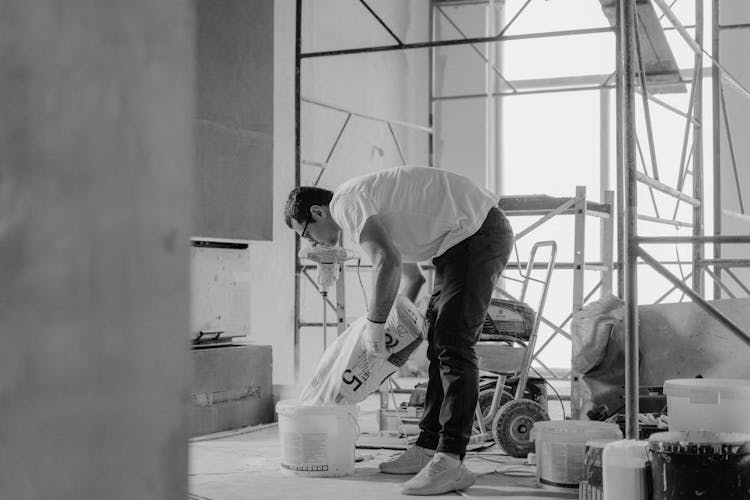All Categories
Featured
Table of Contents
- – Beginner-Friendly Home Upgrade Tips
- – Essential vs. Non-Essential Projects
- – Hands-On with Home Improvement
- – Smart Strategies for DIY Success
- – Keeping Your Spending in Check
- – Best Practices for Affordable Upgrades
- – What are some easy DIY home improvement proje...
- – How can I manage my budget during home improv...
TLDR Summary
- 💡 Start with an understanding of your budget.
- 🛠️ Focus on beginner-friendly DIY projects that require minimal skills.
- ♻️ Repurpose materials to reduce costs.
- 🌱 Emphasize energy efficiency for long-term savings.
Beginner-Friendly Home Upgrade Tips
Improving your home without breaking the bank is more than just a hope—it's achievable with the right approach. Understanding your financial limits is the first step. Tracking your income and expenses allows you to visualize exactly how much you can allocate for home improvements. Spreadsheets or budgeting apps are excellent tools to help keep everything organized. Research shows that those who stay organized generally make better financial decisions (read more about cost-benefit analysis to understand spending impacts).
Essential vs. Non-Essential Projects
One critical aspect of budget-friendly home improvement is distinguishing between needs and wants. This helps you focus on upgrades that provide essential functionality and safety. For instance, addressing a leaking faucet can prevent water waste and damage to your home, while adding new fixtures can beautify a space without being urgent. According to the PN Project Management, homeowners should consider what improvements add the most value. Before diving into aesthetic changes, tackle the essential fixes first.
Hands-On with Home Improvement
Step-by-step DIY projects are a fantastic way to enhance your home while staying within budget. Painting is an excellent entry project; it’s inexpensive and transformative. Opt for affordable paint choices, and consider using leftover materials for trim or accent pieces. Another beginner-friendly project is decluttering your space. Eliminating unwanted items creates a fresh atmosphere, and many local charities welcome donations. Repaint, reorganize, and refresh without a big investment.
Improving lighting in your home can dramatically enhance the feel of any room. Swap out old lighting fixtures for more contemporary and energy-efficient designs. Consider shopping at second-hand stores or searching for deals online. A smart lighting strategy not only improves aesthetics but can also create savings on energy bills long-term.
Smart Strategies for DIY Success
To maintain a budget during your home improvement projects, adopt smart shopping practices. Look for discounts, sales, and second-hand materials. Websites such as Craigslist serve as excellent platforms for getting the best deals. Furthermore, understanding when to tackle a project on your own versus when to hire a professional is crucial. A practical tip is that for smaller tasks, doing it yourself not only saves money but also adds a personal touch to your home. However, when facing larger projects that require expertise, hiring a professional can save you stress and ensure quality workmanship.
Repurposing existing materials can also help lower costs. Get creative! For instance, consider transforming old pallets into shelving units or using fabric scraps to craft unique curtains. Energy-efficient upgrades should not be overlooked. By installing LED bulbs and adding weather stripping, you actively reduce energy consumption, leading to lower utility bills over time.
Keeping Your Spending in Check
Regularly reviewing your budget is essential in ensuring that you stay on the path to fulfilling your home improvement goals. Adjust your spending as required when you discover areas where savings can occur. Celebrating small victories like finishing a DIY project without overspending can give you the motivation to keep going.
Best Practices for Affordable Upgrades
Improving your home on a budget is about planning, creativity, and practicality. By engaging in beginner-friendly projects and employing smart strategies, you can elevate your living space while remaining financially conscious. Remember to embrace flexibility in your approach; adapting your plans as you go can lead to even greater long-term savings.
What are some easy DIY home improvement projects for beginners?
How can I manage my budget during home improvements?

Get detailed overview here
Table of Contents
- – Beginner-Friendly Home Upgrade Tips
- – Essential vs. Non-Essential Projects
- – Hands-On with Home Improvement
- – Smart Strategies for DIY Success
- – Keeping Your Spending in Check
- – Best Practices for Affordable Upgrades
- – What are some easy DIY home improvement proje...
- – How can I manage my budget during home improv...
Latest Posts
Unity and Strength: The Essence of Modern Matriarchy
From Stereotypes to Empowerment: The Journey of Women Leaders
Expert Water Damage Restoration Companies in America
Latest Posts
Unity and Strength: The Essence of Modern Matriarchy
From Stereotypes to Empowerment: The Journey of Women Leaders
Expert Water Damage Restoration Companies in America